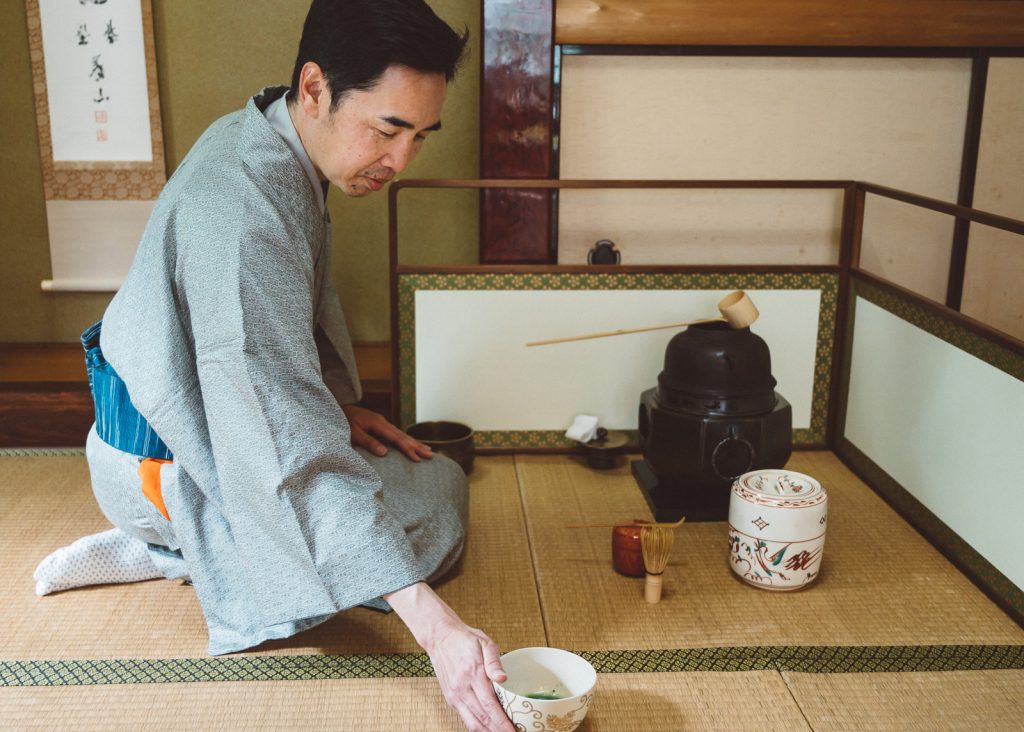
Todd Fong is an American freelance writer living in the greater Tokyo area. He has visited, written about, and photographed Iiyama City many times and considers it one of his favorite escapes from the big city.
Illuminated only by the light of the open door, the yamabushi Shida-san sat in the darkness of the temple praying for our safe travels on the way up the mountain to Kosuge Shrine Okusha while we waited silently outside. Yamabushi, the warrior priests of the ancient Shugendo religion, once numbered in the hundreds here in Kosuge village; now Shida-san is the last remaining yamabushi in northern Nagano Prefecture.
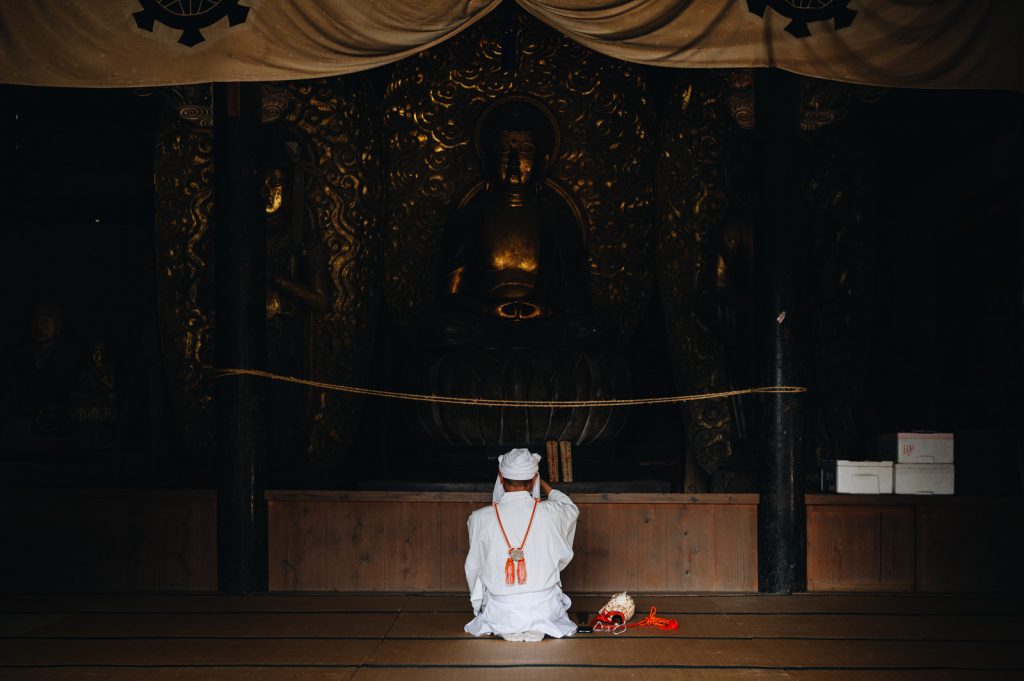
The Last Yamabushi of Northern Nagano
We came to northern Nagano as part of a tour to experience a more spiritual side of the area. Kosuge is part of Iiyama city, known more for winter sports like skiing, snowboarding, and snow cycling than its history. But in truth, nearly 500 years ago, Iiyama was a war zone like no other place in Japan, where two titans of the Sengoku era, Uesugi Kenshin, The Dragon of Echigo, and Takeda Shingen, The Tiger of Kai, clashed in the legendary battles of Kawanakajima. The two warlords’ armies nearly annihilated each other, and the spiteful Takeda burned almost every one of the shrine’s buildings to the ground. History states that Takeda was angry because Uesugi prayed for victory against him at the shrine. Still, one also wonders if he was taking revenge against Kosuge’s many yamabushi, who helped hide Uesugi from Takeda during one of the battles. Many years later, when Takeda Shingen was eventually defeated by Oda Nobunaga, the Uesugi clan reclaimed control of the region and had the shrine rebuilt.
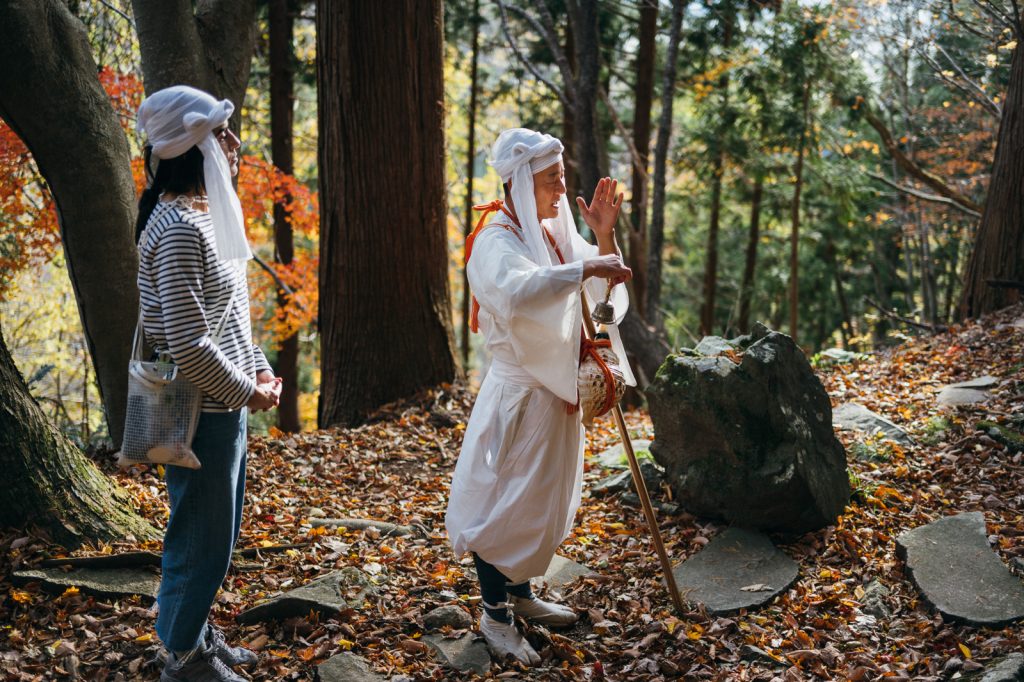
Whatever the case, the destruction of the shrine and the surrounding village was the beginning of the end for the yamabushi living in Kosuge, the nail in the coffin being the outlawing of the Shugendo religion in the late 19th century by the Meiji government. Today, only Shida-san remains, and when you hear the sound of the yamabushi horn echoing through the forest, you know it is him greeting the gods of the mountain.
Shugendo: Spiritual Trekking to an Ancient Shrine
Anyone can make the 1.2-kilometer trek up the mountain from Kosuge Shrine’s third torii gate to the Okusha inner shrine amid the forest at 900 meters above sea level. To be more accurate, anyone can attempt to make the trek; it is a physically demanding hike best attempted in cooler weather and with plenty of water to stay hydrated no matter what time of year you go. But if you go up the mountain accompanied by Shida-san, the journey itself, rather than the inner shrine, becomes your destination. In the silence of the forest, Shida-san explains, you can best hear your voice speaking to you.
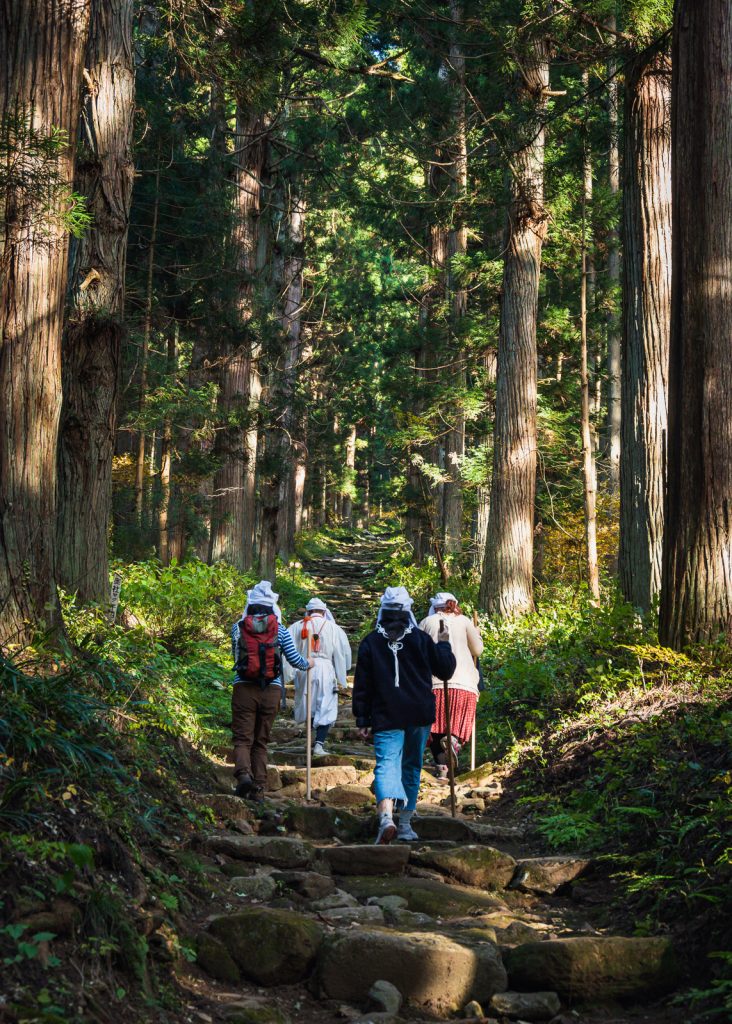
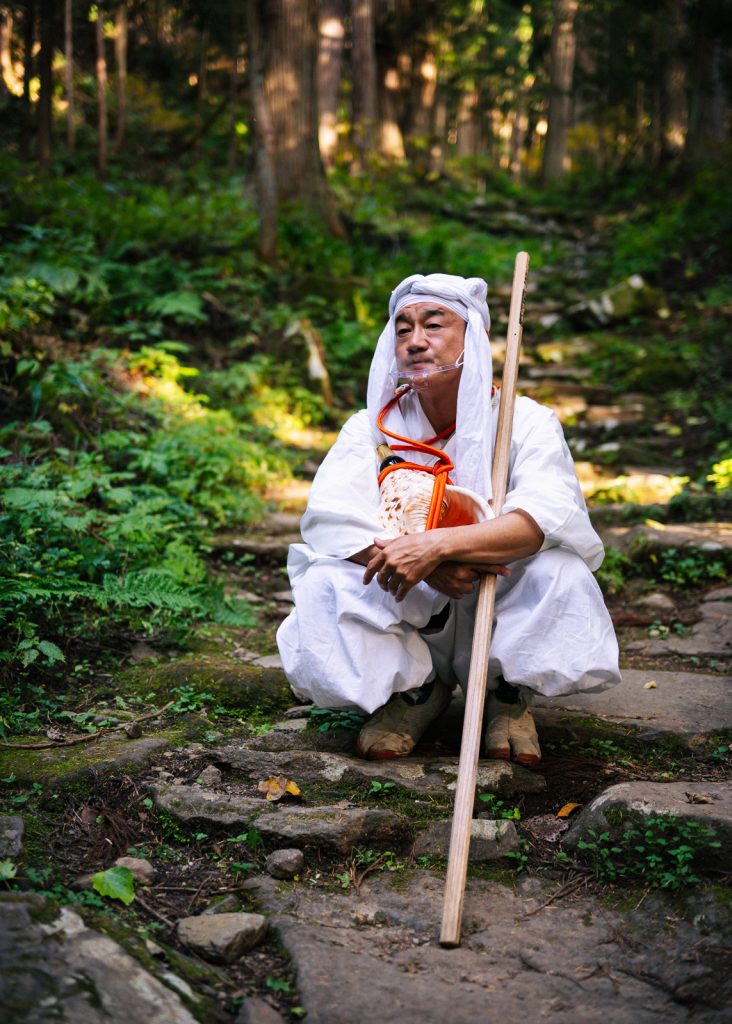
Shugendo, the religion of the yamabushi, is like a katamari ball of Shinto, Buddhism, ancient ascetic practices, and even, as Shida-san opines, ancient Judaism (he theorizes that Judaism came to Japan via the Silk Road over 2,000 years ago). But its roots are in mountain worship, and one of the core tenets of Shugendo is to trek into the mountains to find one’s true self.
The secret to finding yourself is to first lose yourself: to strip away everything that identifies you as a person in the modern world. Switch off the phone, cover your expensive hiking gear with a simple white robe, and walk, often for hours, in the silence of the mountains. Shida-san helped us don the cloth headpiece and a paper necklace called a shime, which like the paper objects hung from straw ropes at the boundaries of shrines, separates your body from the ordinary, unclean world.
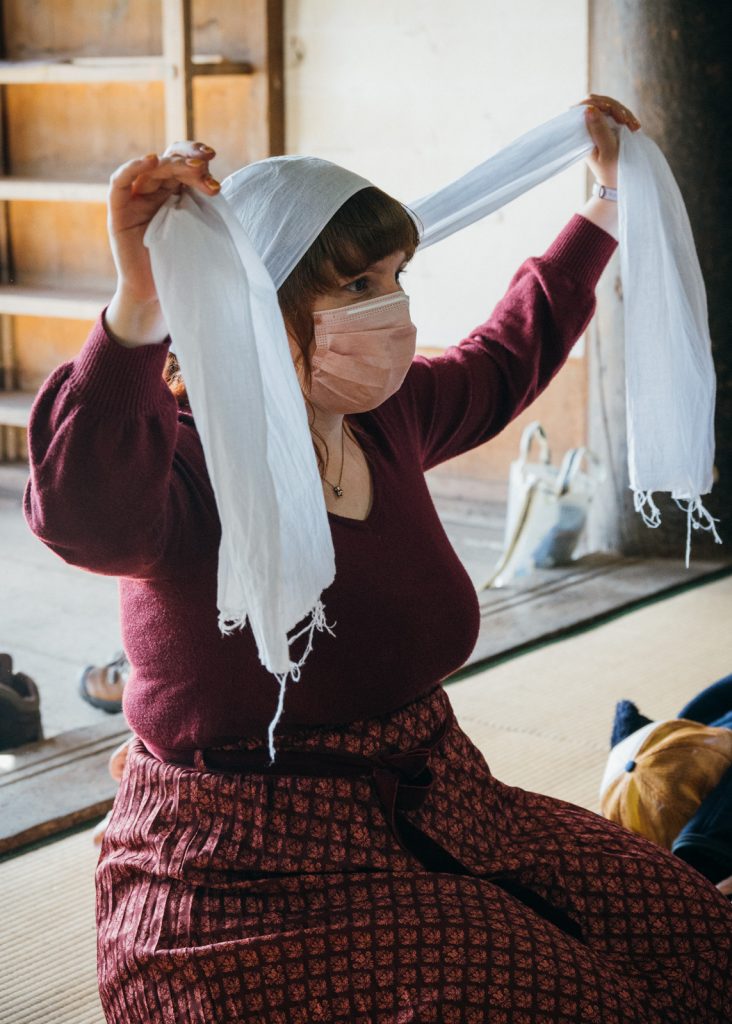
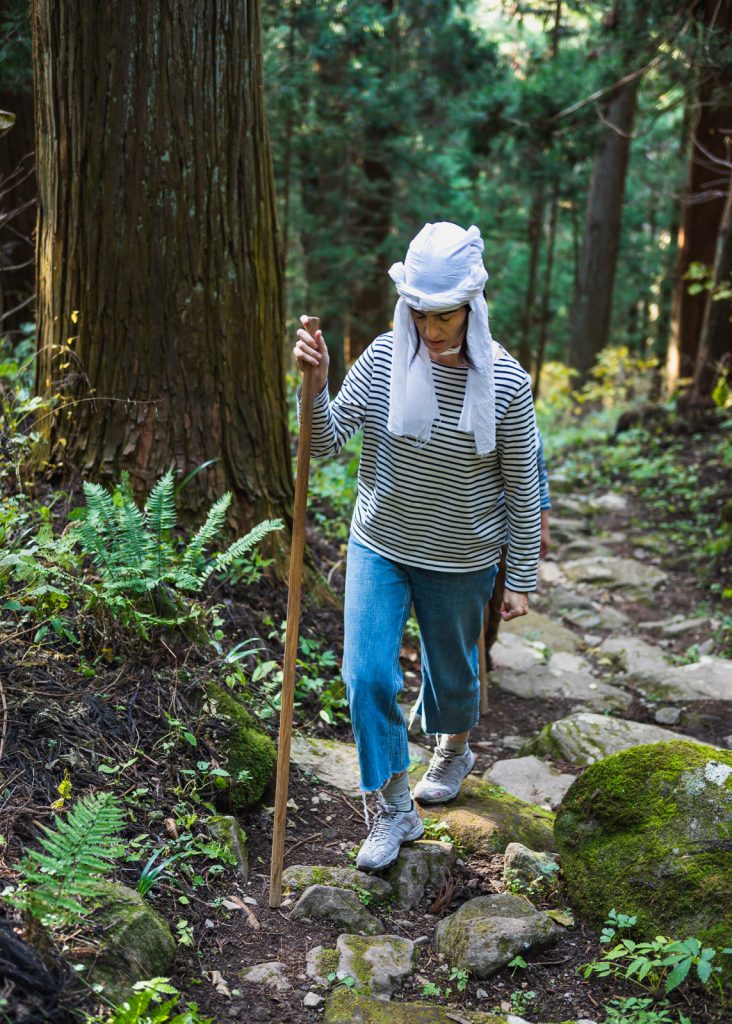
In authentic Shugendo training, Shida-san’s job would be to lead us into the mountains. We would follow his path as well as we could and follow him in prayer chants at places deemed sacred by Shugendo. In reality, Shida-san understands that such a tour would lead a casual participant more towards confusion than enlightenment. So instead, he guided us into the mountain in a more secular sense, explaining the spiritual and historical significance of the area along the way.
At one point, Shida-san paused along the path and asked us, “What does an animal think about while moving through the forest?” Suddenly, he sprang like a deer from rock to rock, climbing the path in near silence with the ease of a creature born from the mountains. “Nothing. An animal doesn’t think about how to move through the forest; it acts on instinct.”
Learning this instinctive movement is part of Shugendo training. In the days when yamabushi numbered in the hundreds of thousands in Japan, they were respected as powerful combatants as well as spiritual guides. Ninja, says Shida-san, were warriors trained by yamabushi, possessing their physical prowess without the spiritual connection. As a result, the warlords of feudal Japan effectively weaponized Shugendo as a potent military advantage. If the yamabushi were the Jedi, the ninja were the Sith. And Shida-san? “Yoda,” he mused.
Climbing the Mountain to Kosuge Inner Shrine
We stopped at several sacred locations on the way up the mountain, with Shida-san leading us in a prayer chant at each place. An overlook of a massive rock formation is a carving of Fudo-myoo, the fierce protector of Buddhism and its followers. Although the carving is difficult to make out, the entire rock itself is supposed to contain the spirit of Fudo-myoo, so don’t strain your eyes looking for him. Further up the mountain is Aizen-iwa, the “Love Rock,” with a small shrine to pray to the god of matchmaking for a good marriage or marriage partner.
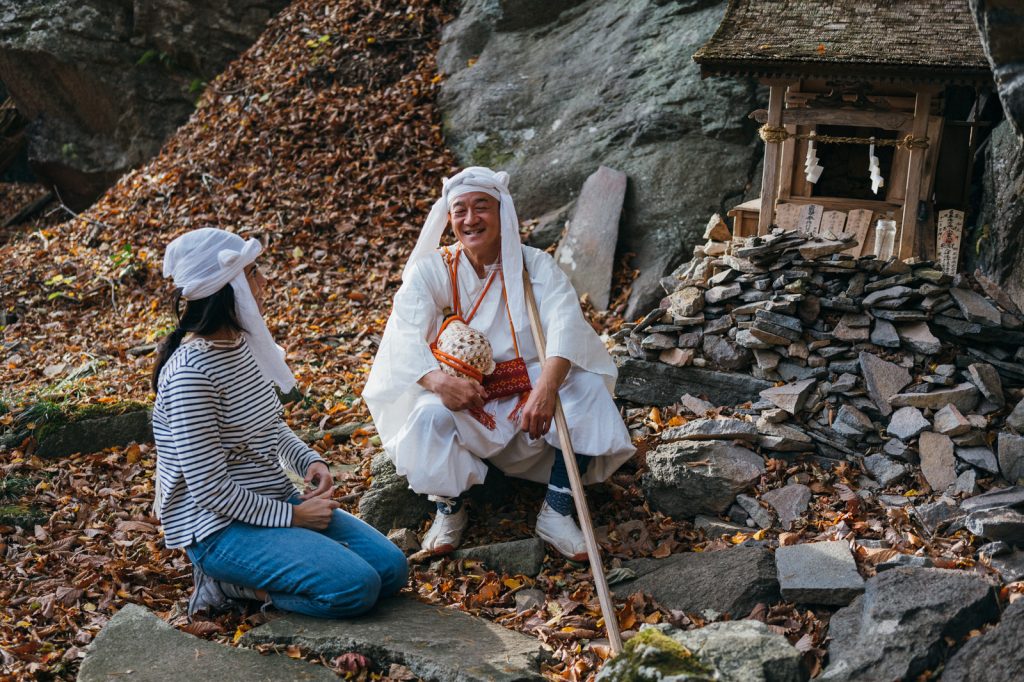
After a strenuous climb of a little over an hour, including an optional shortcut involving climbing a rock face with the help of a chain, our little band of Padawans finally arrived at the Kosuge Okusha Inner Shrine. Built into a cave in the rock, the shrine building protects the stream’s source that runs down the valley into Kosuge Village. It drips from an underground source, forming a pond that overflows and creates the stream. Thousands of years ago, the pond was worshipped here, while the building now covering it was thought to have been constructed 1,500 years ago. Several objects of worship are contained in the shrine, which is only open to public viewing on special occasions.
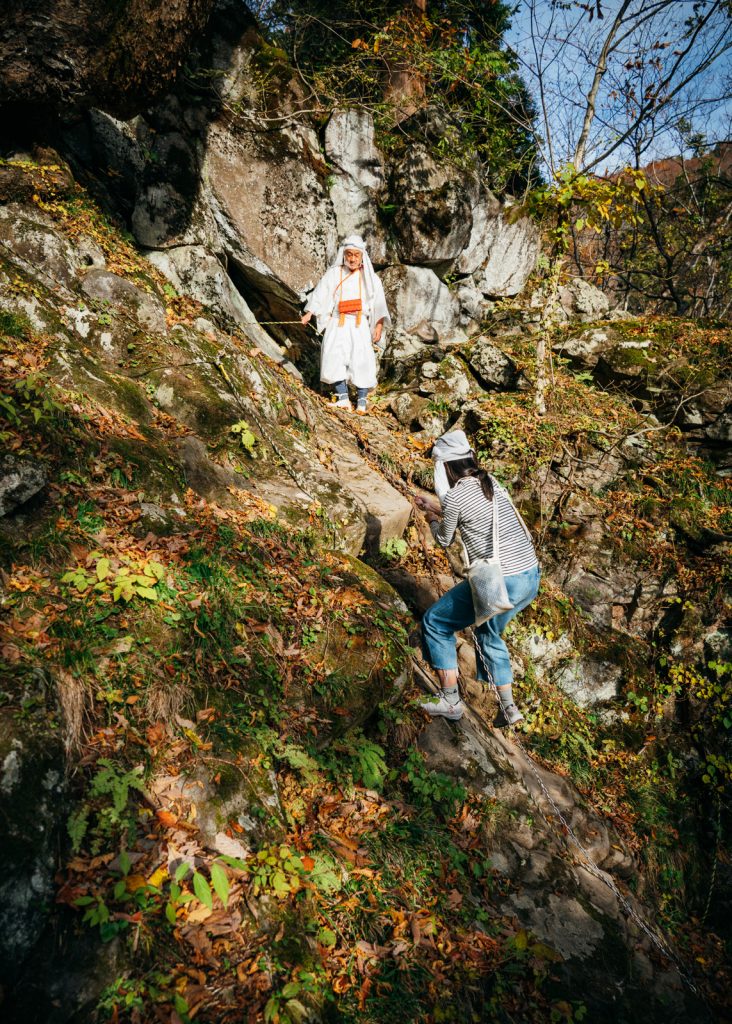
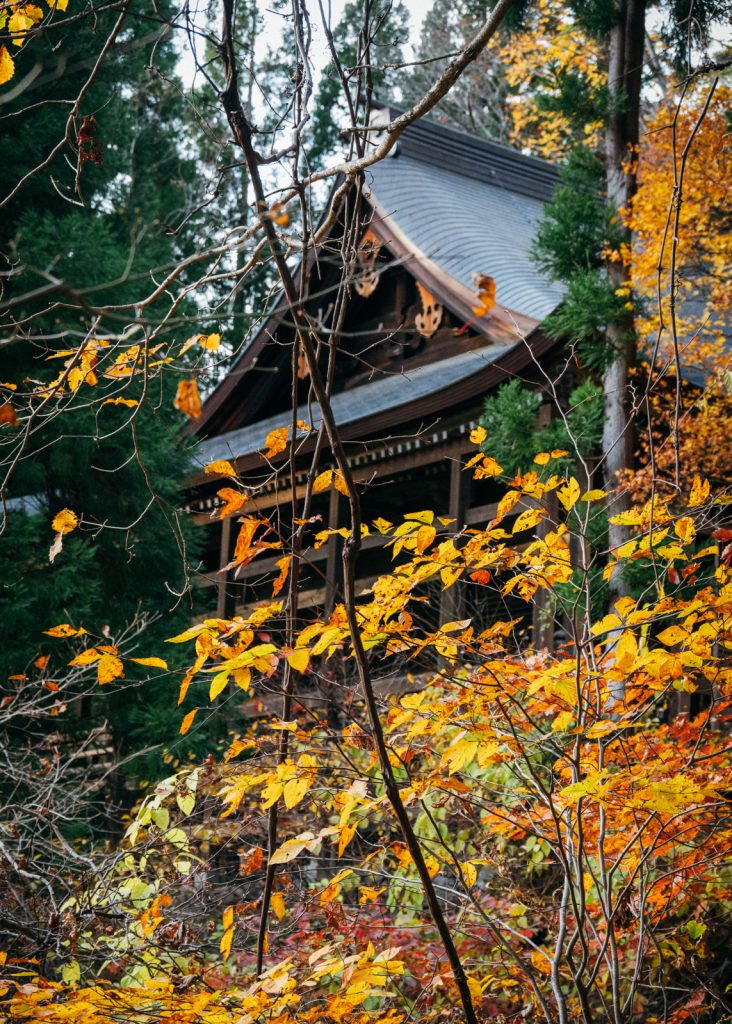
Near the shrine, Shida-san led us to a secret place, the place he believes is the real power spot on the mountain. Sworn to secrecy, I cannot tell you more about the location, but if you’re lucky, perhaps he will take you there on your trek up the mountain.
Heading down, back to the world of the living, the coming nightfall and the aching of my legs caused me to fall silent for long periods. In the silence of the mountains, did I catch a glimpse of my true self reflected in the golden autumn leaves or the clearness of the mountain stream? I’ll never tell.
▷ Iiyama tabi-tabi tour
https://www.tabi-tabi.com/en/archives/plan/z-167
Finding Zen at Shojuan Temple
On the opposite side of the Chikuma River, centuries after Kosuge Shrine was constructed, the Buddhist temples of Iiyama sprang up like spring bamboo along the hillside near Iiyama Castle. One could spend an entire day enjoying the various temples along Iiyama’s “Tera Meguri Yuhodo,” a pedestrian path connecting many of them. But we were interested in one, in particular, the Rinzai Zen Buddhist temple Shojuan.
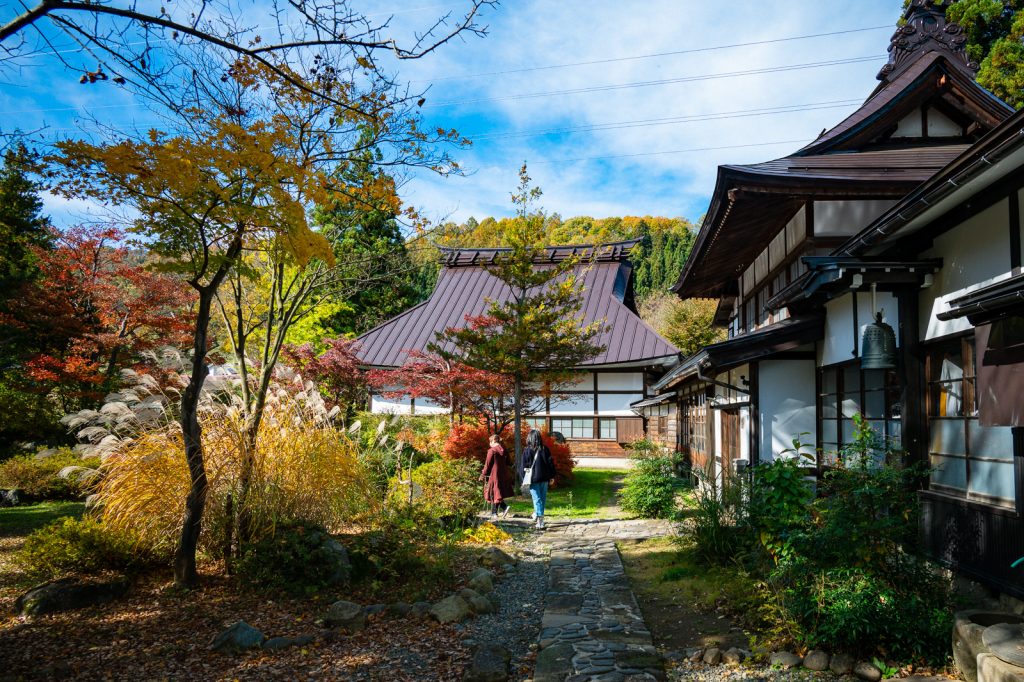
It is a bit of a stretch to call Shojuan a temple. Its most famous historical resident, Dokyo Etan, the “Old Man of Shoju,” would undoubtedly have objected to that classification. As a monk dedicated to the spare lifestyle of Rinzai Buddhism, Shojuan was just a ramshackle house to him, the place where he would eventually train Hakuin Ekaku, the man considered the redeemer of Japanese Zen Buddhism.
The illegitimate son of a samurai lord and his concubine, Dokyo could have led a privileged life protected in Iiyama Castle but became attracted to Buddhism at an early age. He showed such promise that his teacher made plans for Dokyo’s greatness against the young man’s own wishes to live a quiet life of a monk. To escape his teacher’s ambitions for his life, Dokyo retired to Shojuan in his hometown of Iiyama. He became the epitome of a Zen monk, with little care for material goods, personal appearance, or even human relationships. Although his crusty appearance and thorny personality earned him the nickname “Old Man of Shoju,” he was still respected for his unwavering dedication to Rinzai Buddhism.
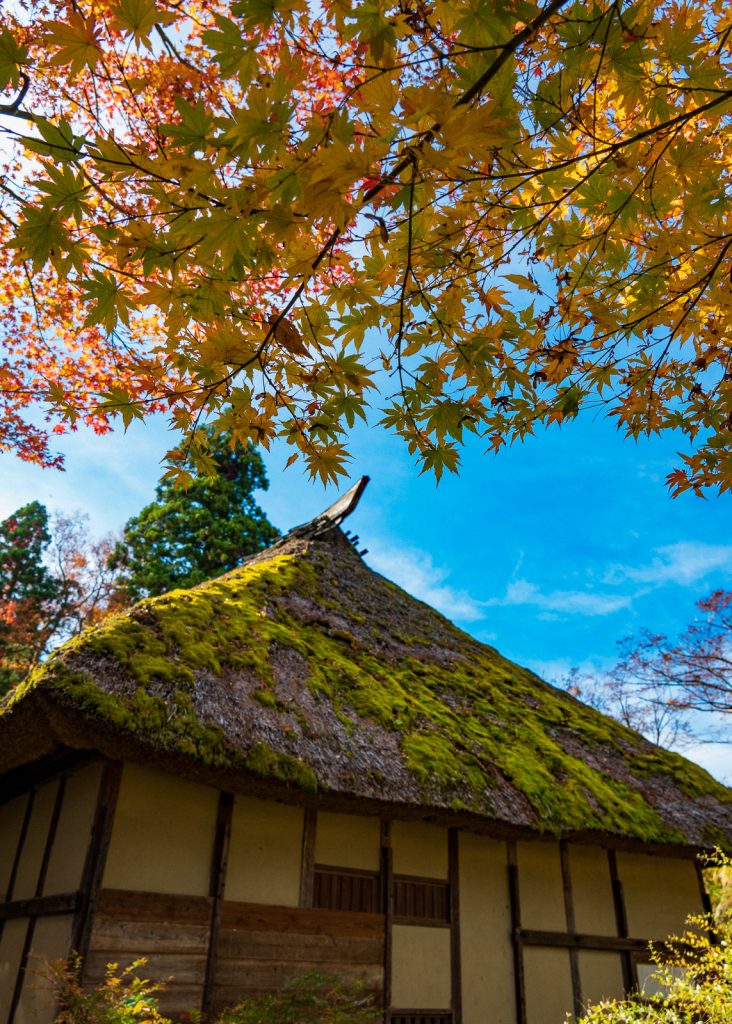
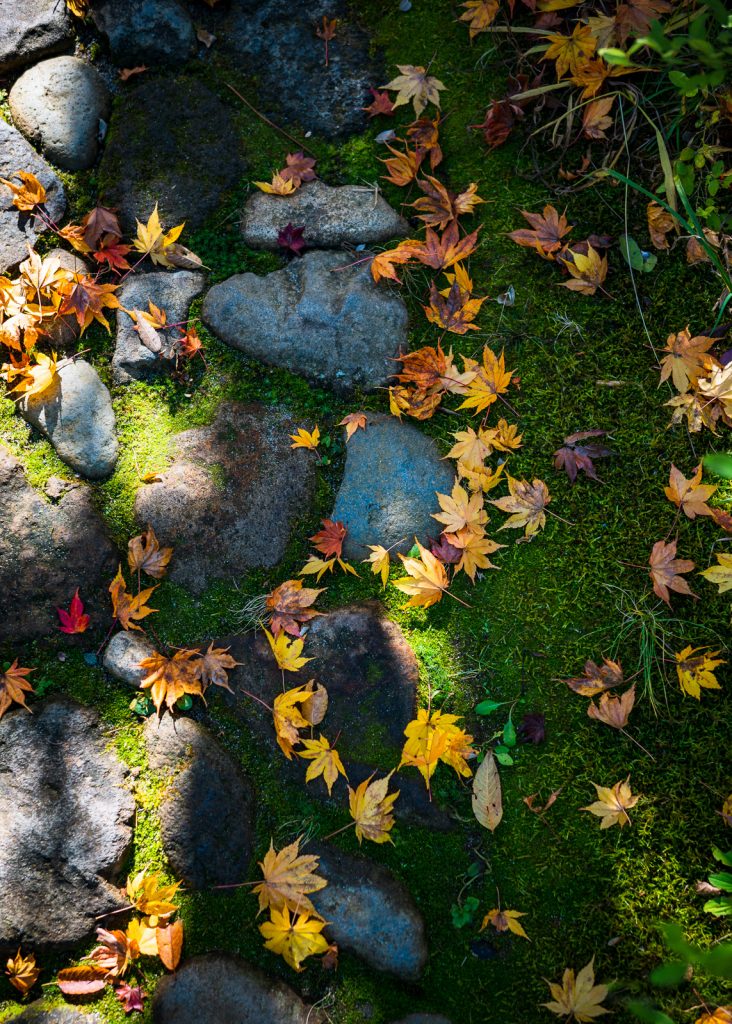
Shojuan carries on the traditions of strict Rinzai Buddhist training, though perhaps without the saltiness of Dokyo’s personality. Visitors can experience zen meditation here in various durations, from a very short trial experience of 30 minutes to several days or weeks.
The Art of Zen Meditation
Meditation is done in a meditation hall consisting of two rows of tatami-lined platforms on the east and west sides of the building. Each participant is allowed one tatami mat, considered their personal space, for the duration of their stay, whether it be a few minutes or a few months. Those staying overnight will be given a futon to sleep on, stored on a rack above the tatami space, and a small basket to hold all other personal objects. The Mandarin Oriental this is not.
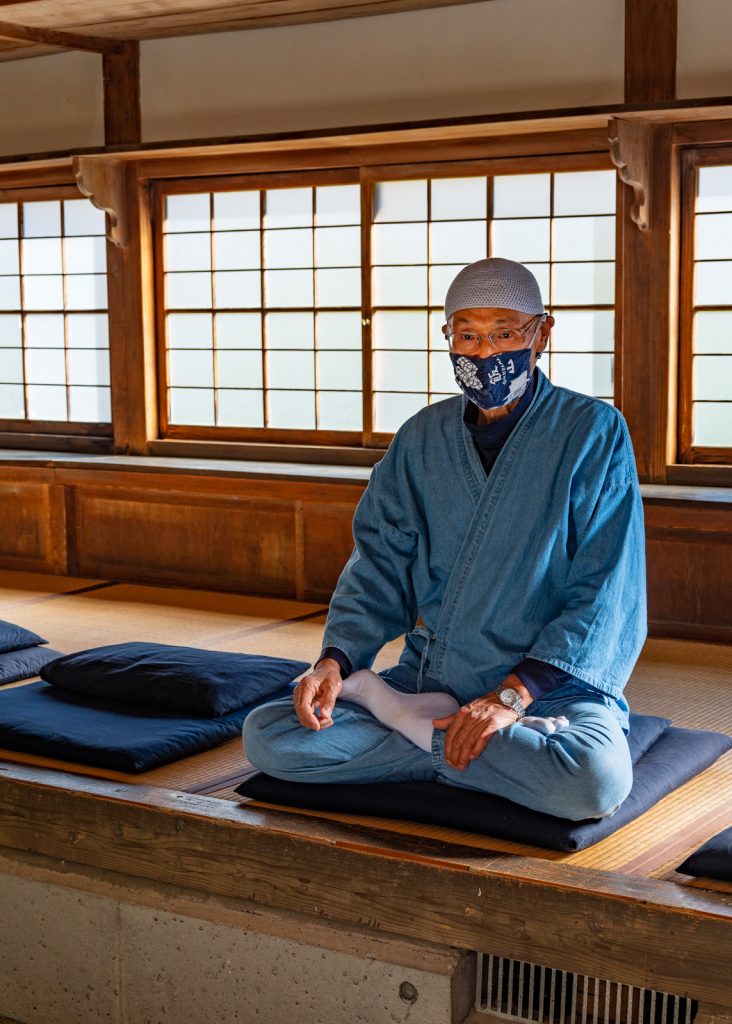
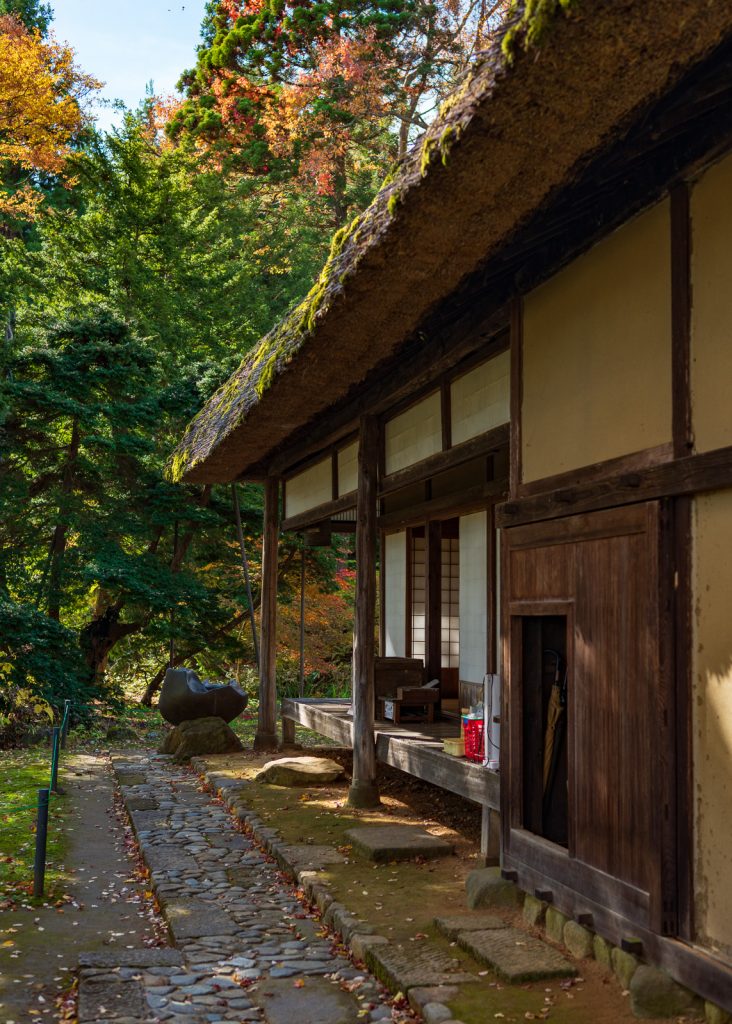
The trick of zen meditation is finding the balance between clearing your mind of all thoughts and falling asleep. Stray too far from the center, and you’ll be reminded of your goal with a sharp thwack from the end of a wooden paddle, though probably with a gentle smile rather than a scowl.
When you’ve had enough zen for the day, a short walk down the Tera Meguri Yuhodo will bring you to Shonenji Temple, one of Iiyama’s most beautiful locations. It is most spectacular in the Autumn when the brilliant leaves rain down on one of the most perfect moss gardens in Japan. Please stay on the rock path in the temple as the moss is easily destroyed by careless visitors trampling all over it. If you can find a moment of solace here, it will make your visit to Iiyama city all the more complete.
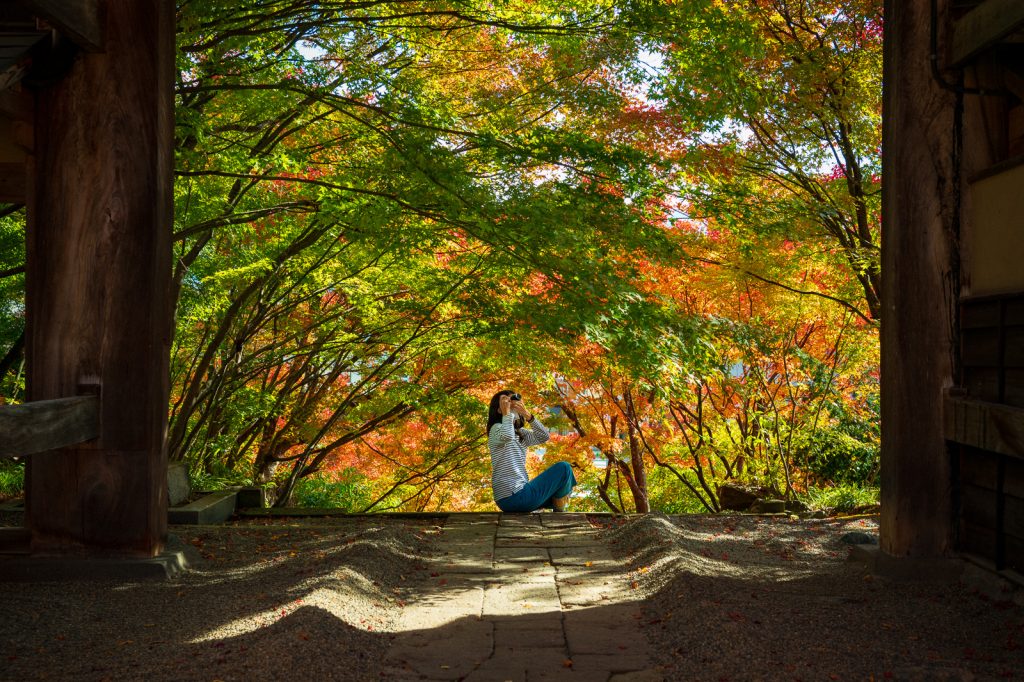
Whether you come to Iiyama city to connect with your spiritual side or enjoy numerous outdoor adventures, cycling around the valley to hiking the Shinetsu trail, you are certain to discover there is much more to Iiyama than just snow sports.
▷ Iiyama tabi-tabi tour
https://www.tabi-tabi.com/en/archives/plan/z-167



